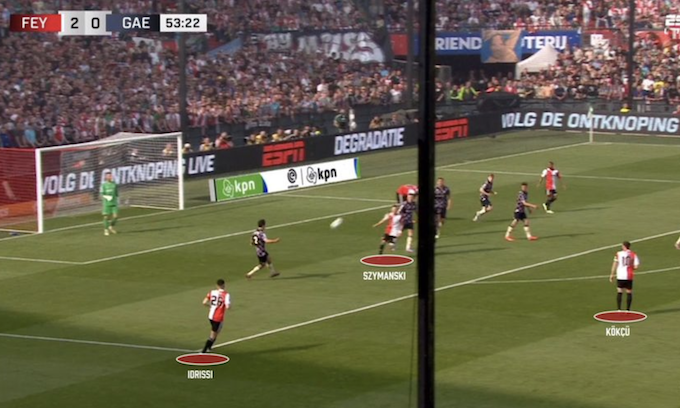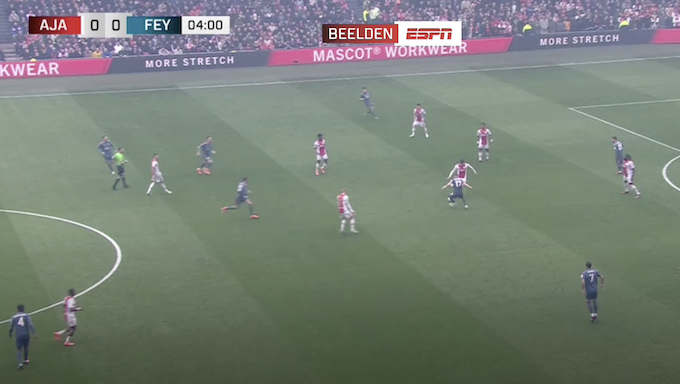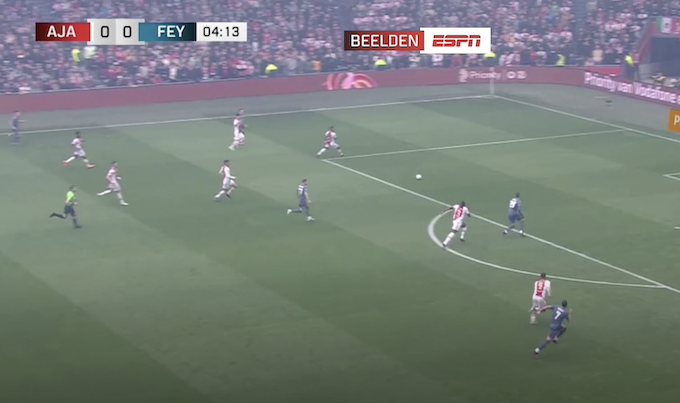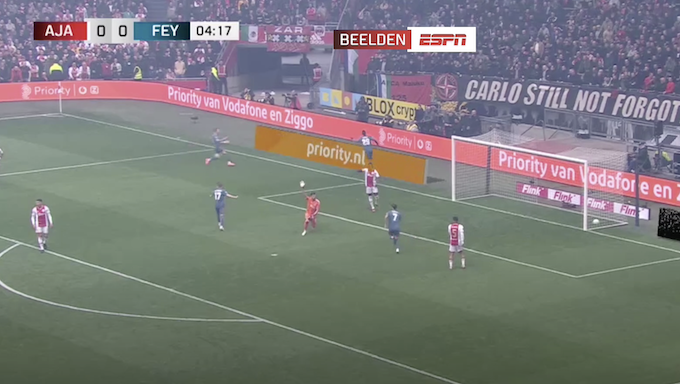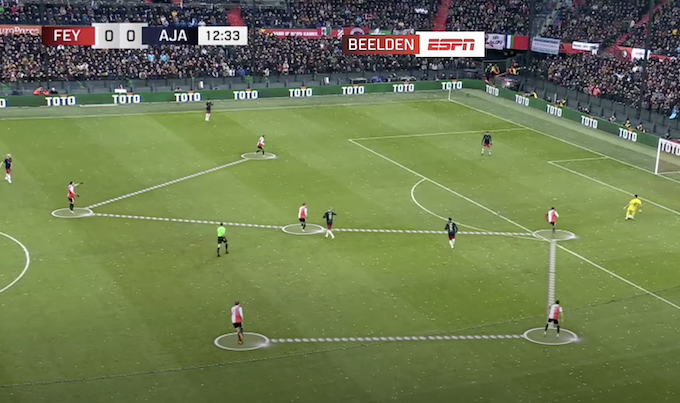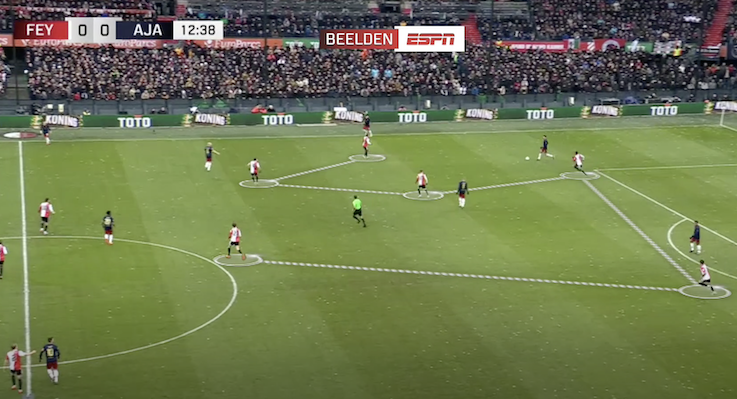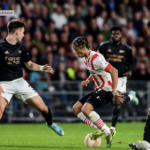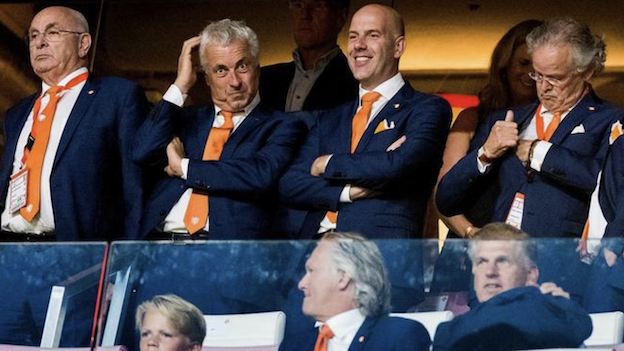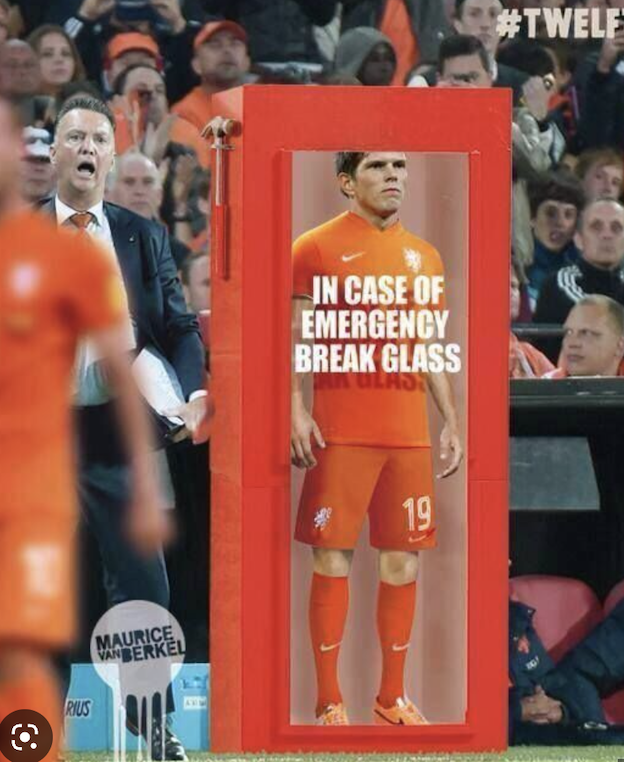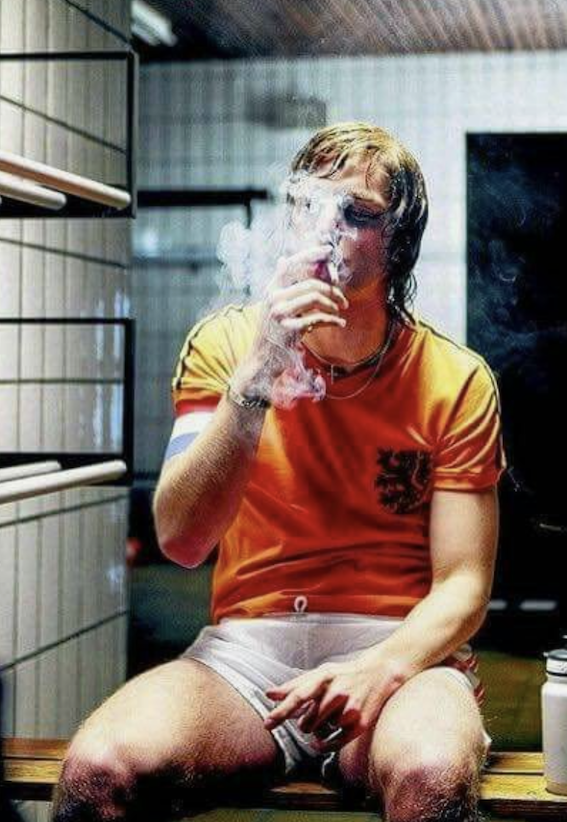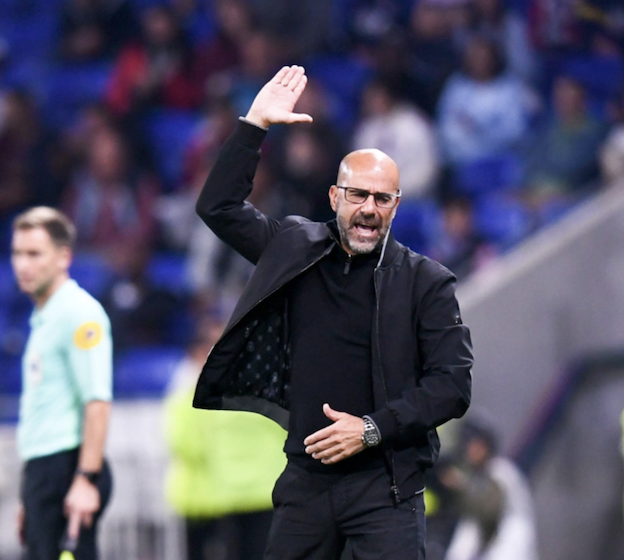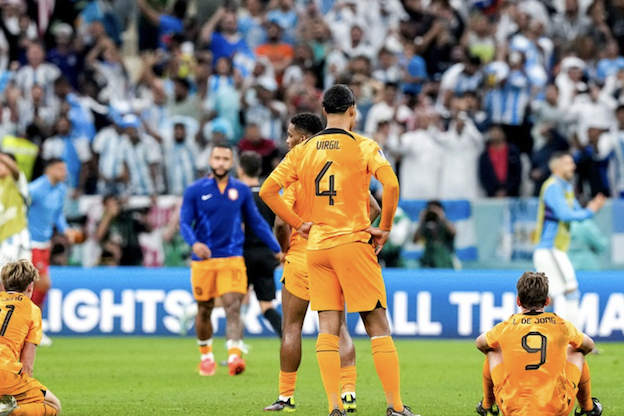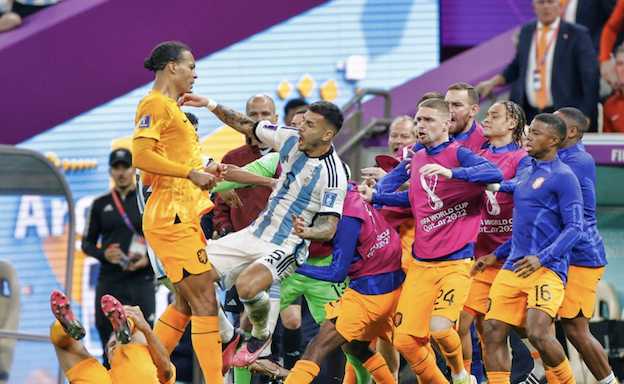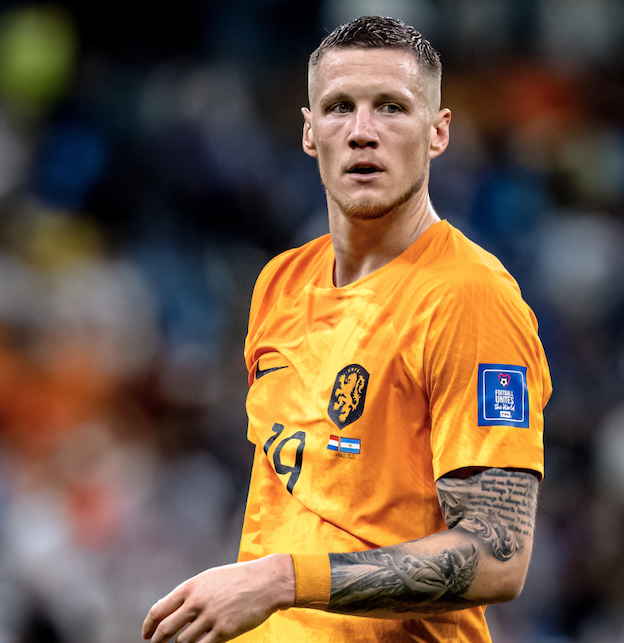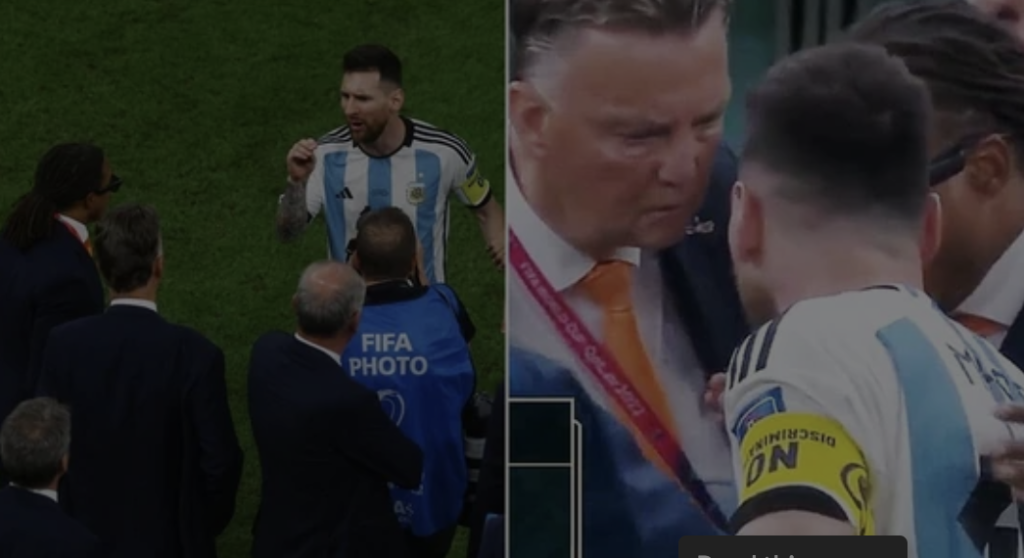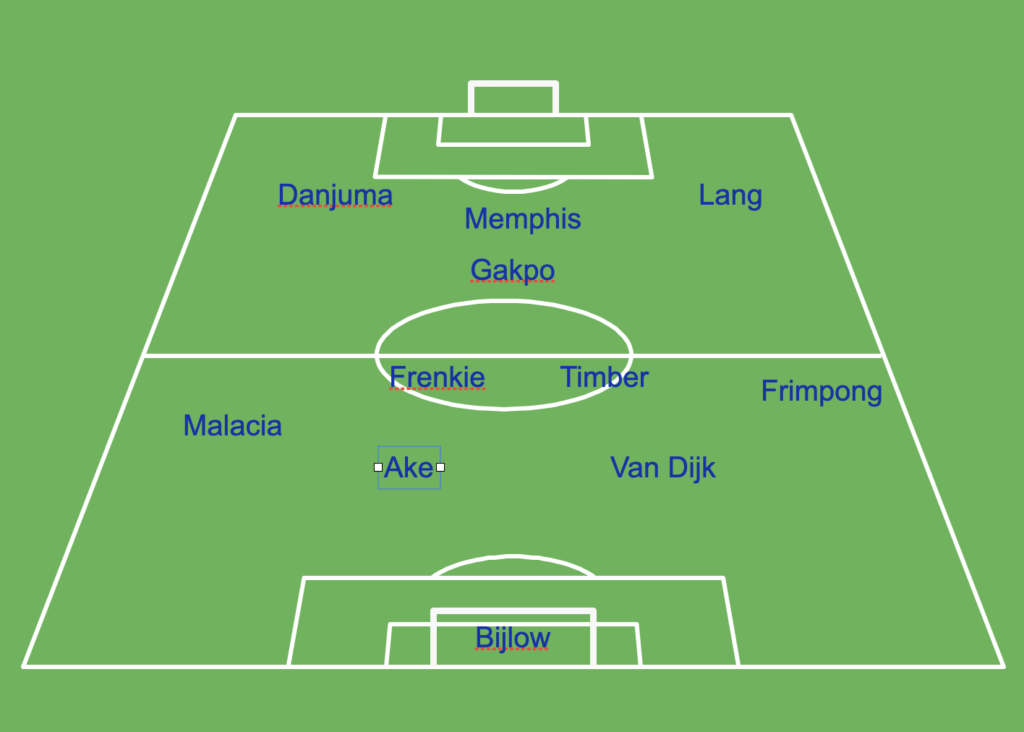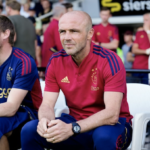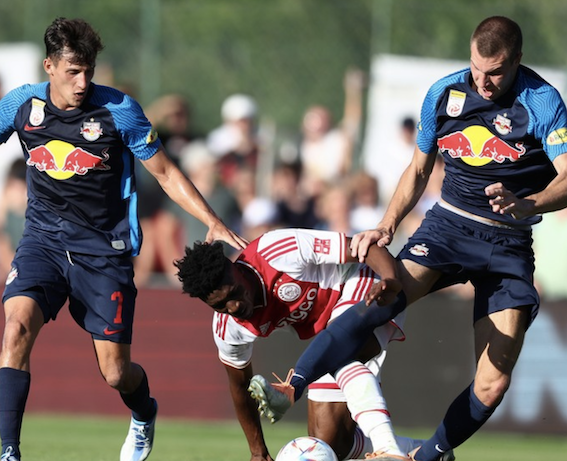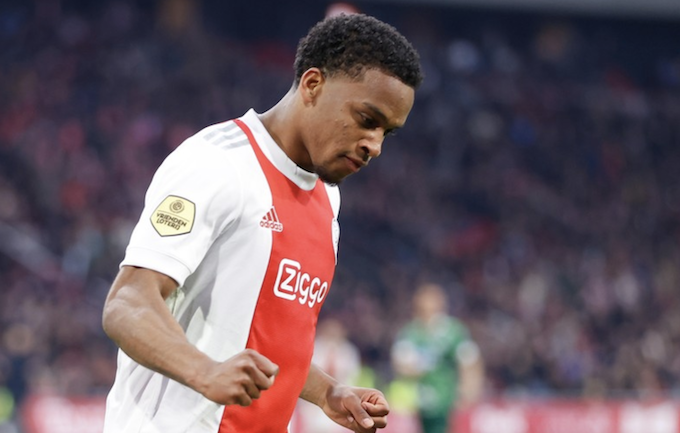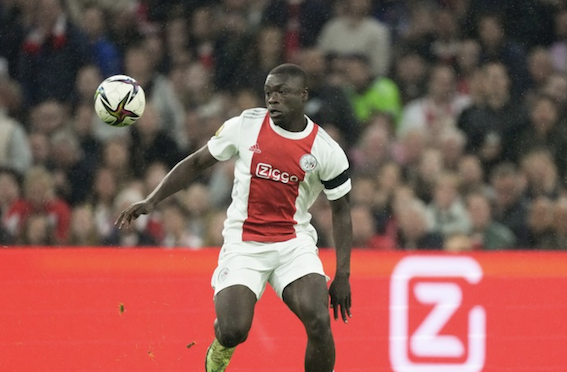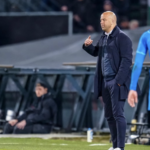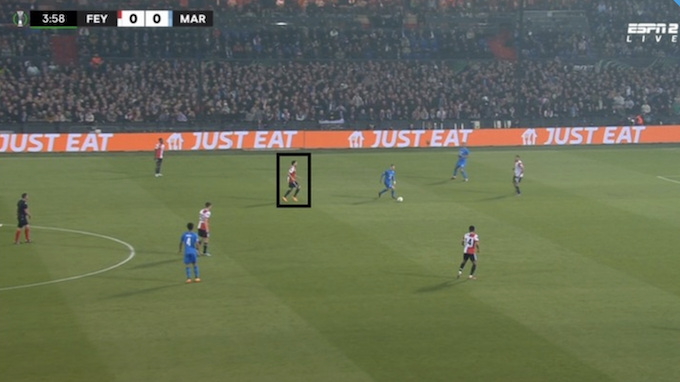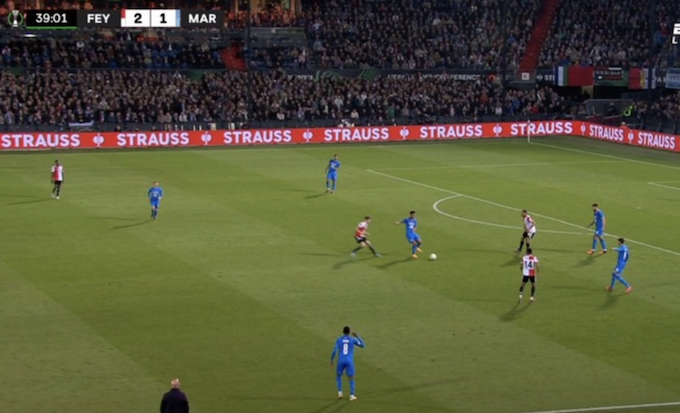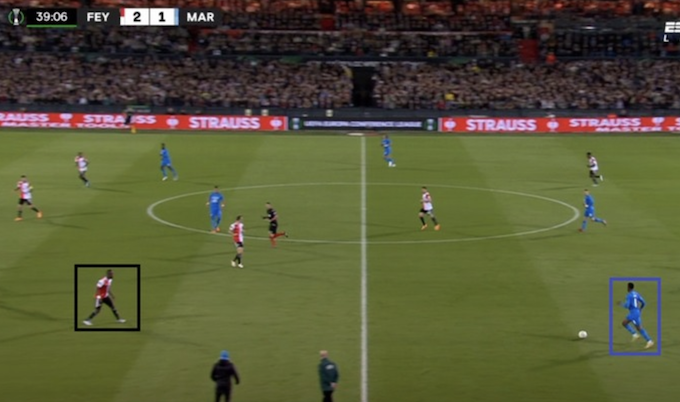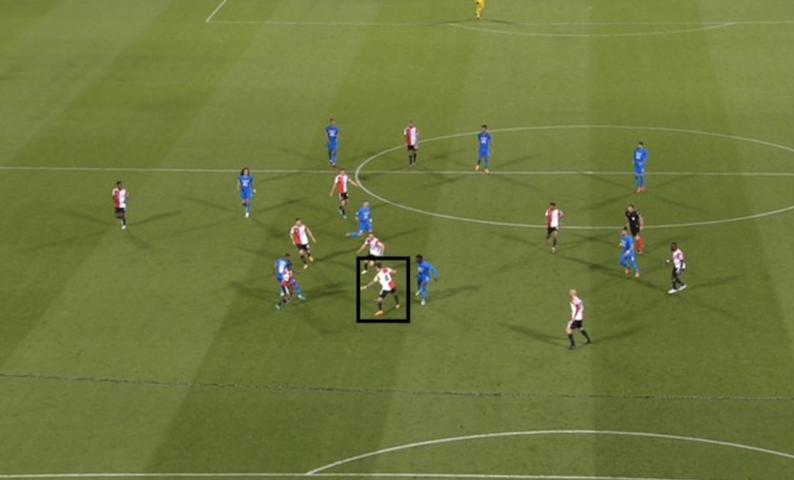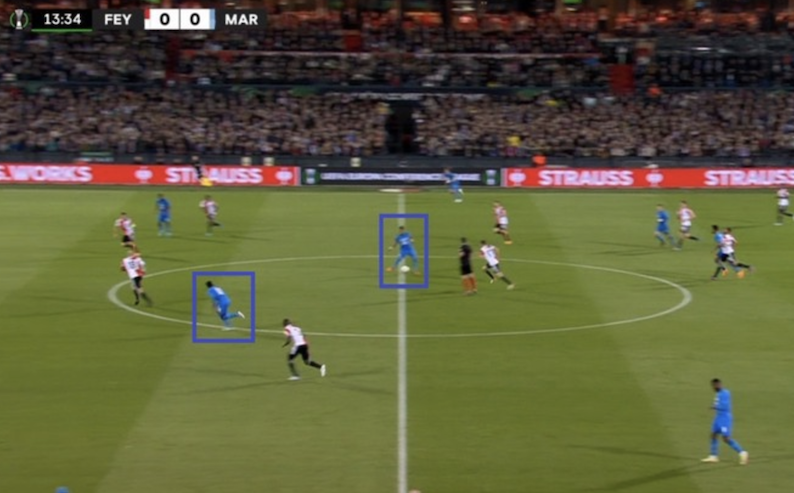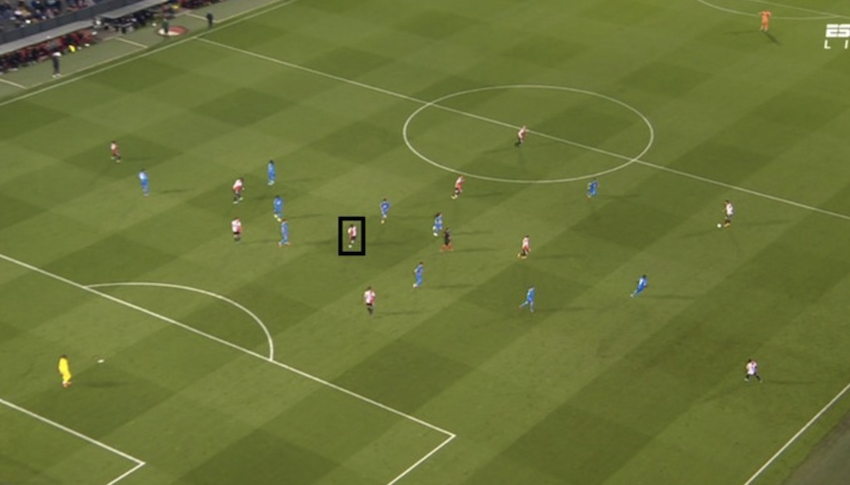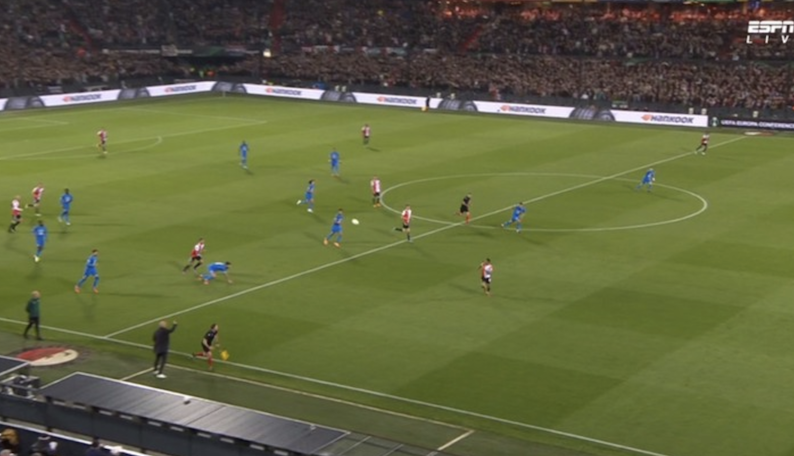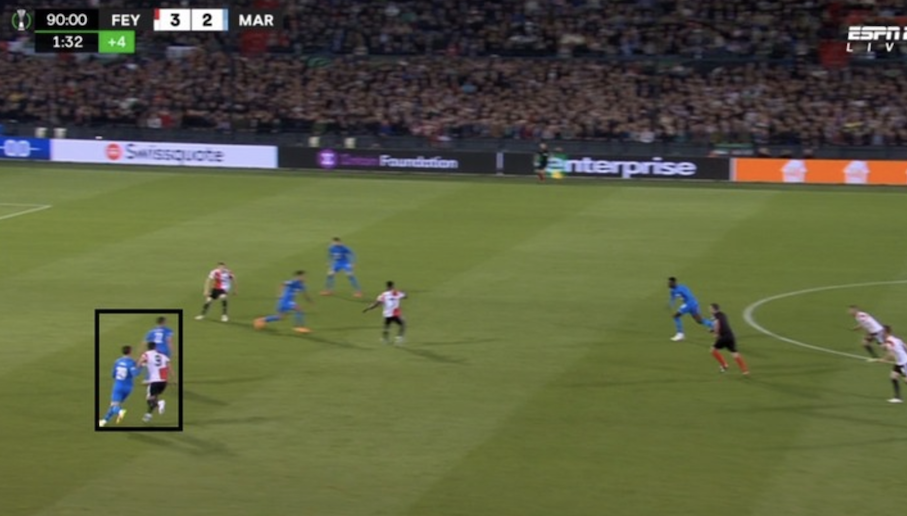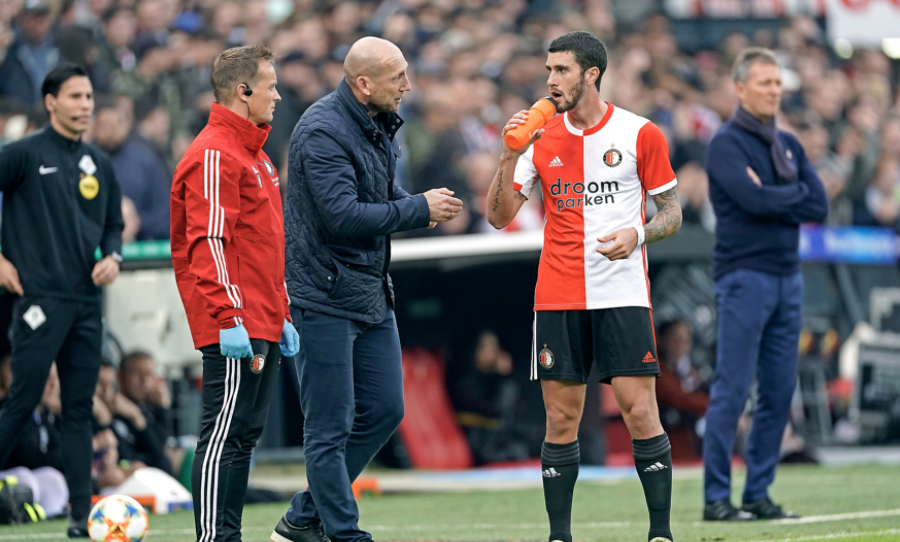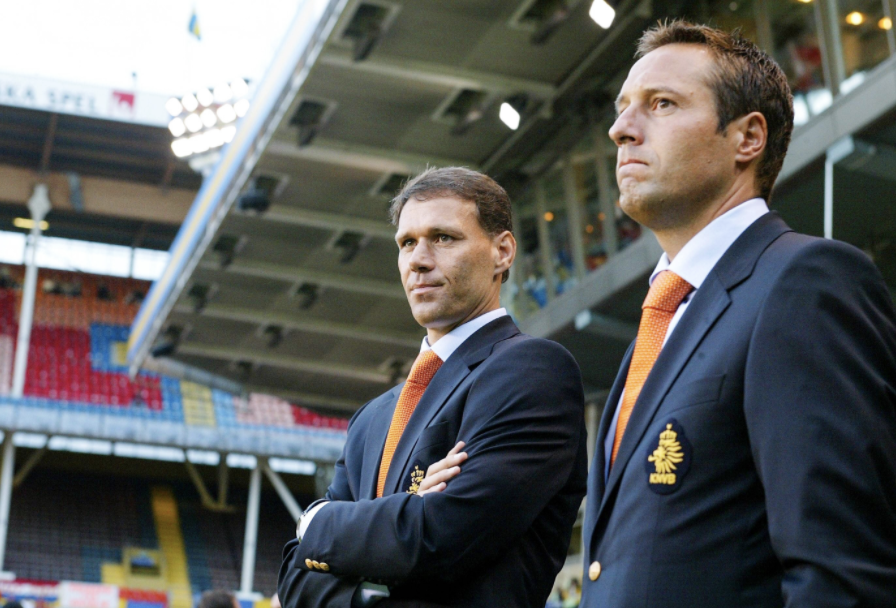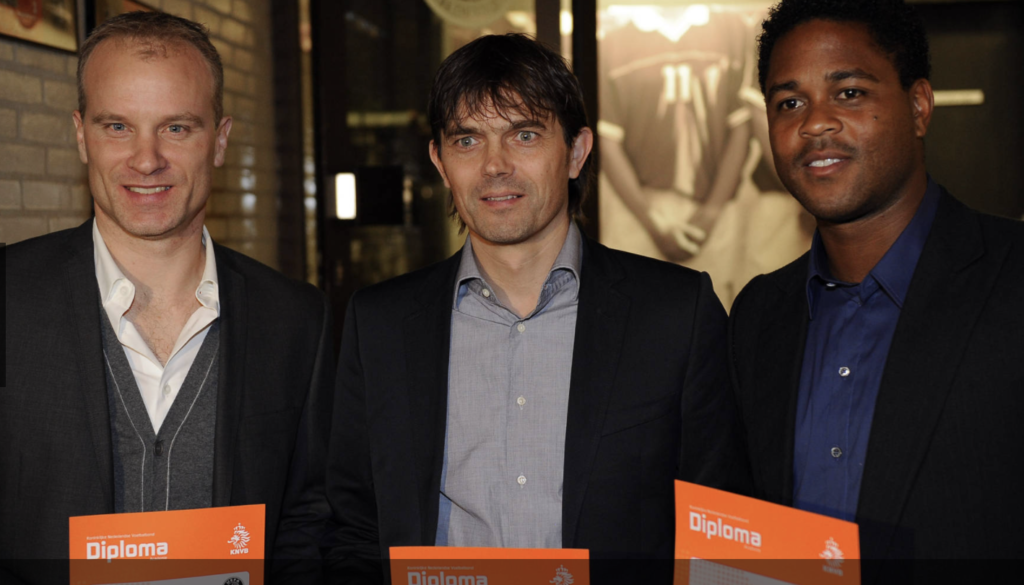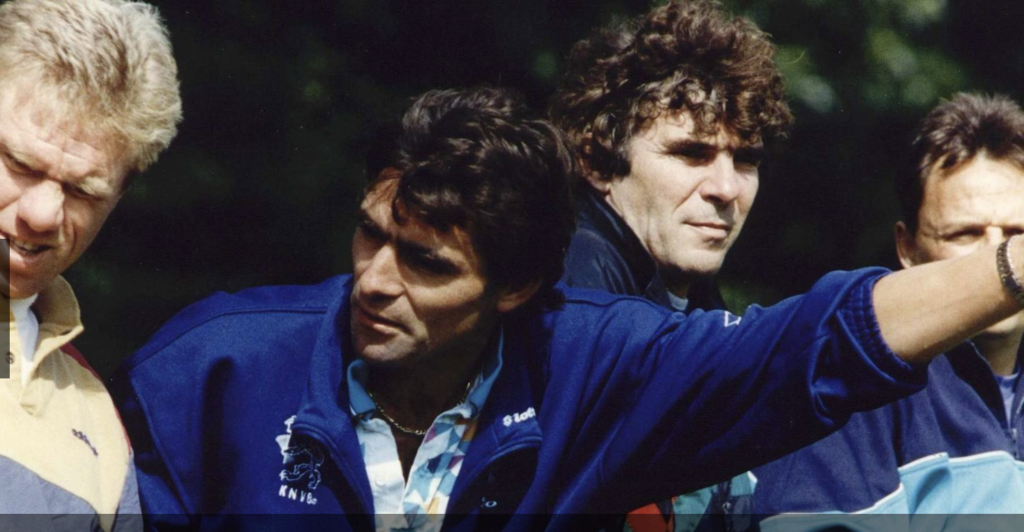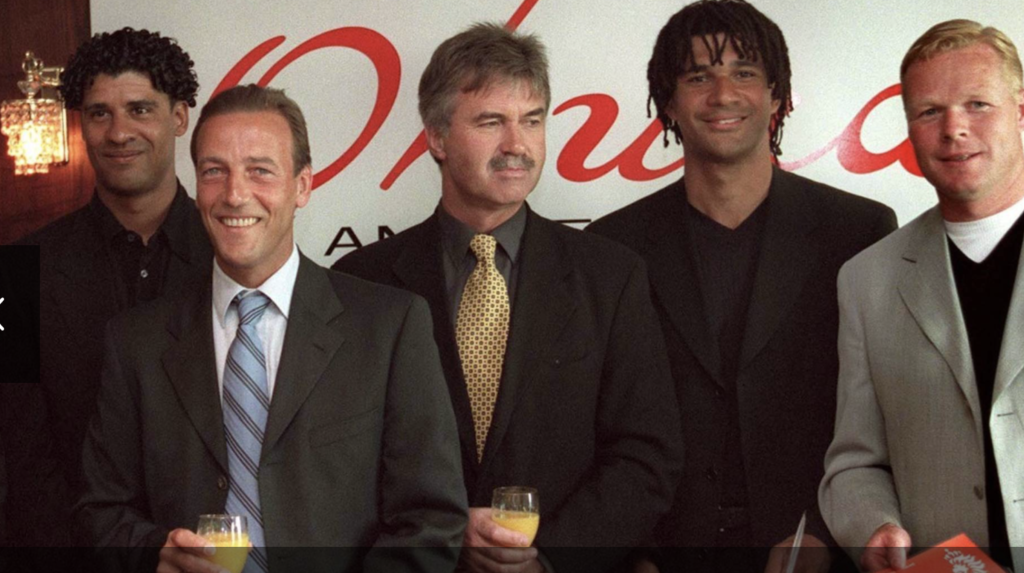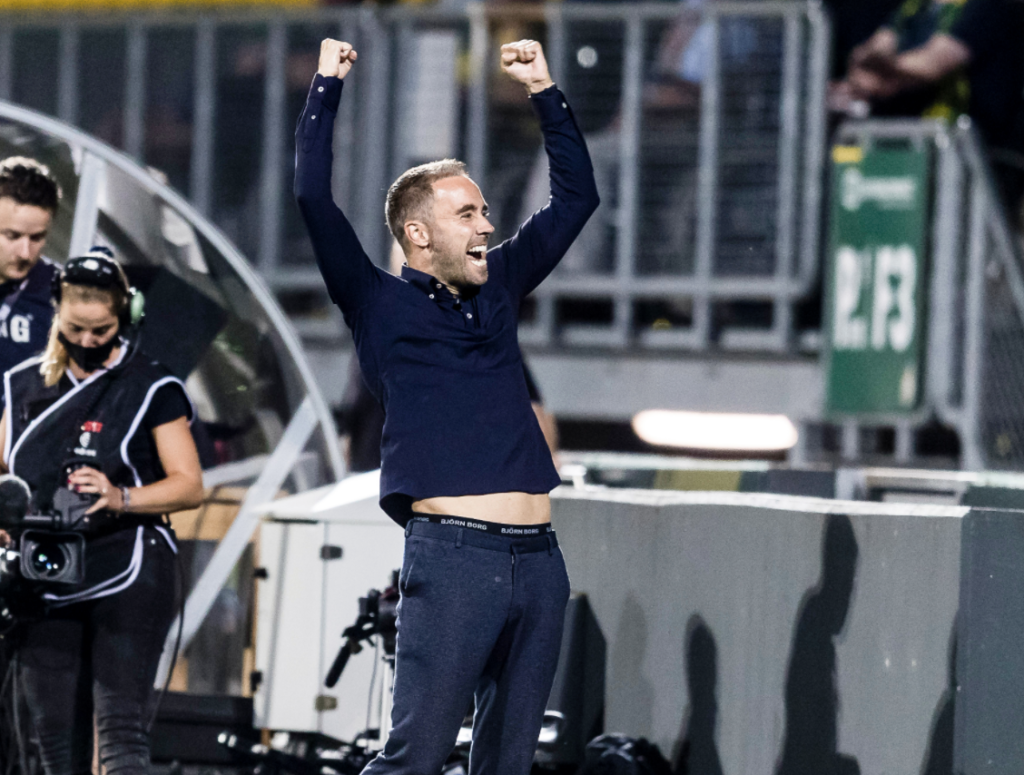Feyenoord won it’s 16th title, only 6 years after a complete different team (under Van Bronckhorst) won it. And they won it about 19 years later after the trophy in 1999.
The gaps between titles becomes smaller and if Arne Slot has any say on it, the next gap will be even smaller…
At the start of the season (when Gakpo was still at PSV), many pundits and analysts were convinced that PSV and Ajax would be slugging it out for the title and Feyenoord and AZ would battle for 3rd place.
Yes, PSV had to sell their two most prolific attackers in the winter, but Ajax had a complete meltdown while Slot’s Feyenoord transformed into a winning machine. Where Feyenoord won the title in 2017 with 1 point difference on Ajax, today Feyenoord is 13 points adrift from the Sons of Gods after 32 matches. Two more to go.
A very unlikely title, in other words but thoroughly deserved.
When Idrissi scored the 1-0 in the championship match versus the Eagles, the whole city erupted, but Arne Slot was stoic on the sidelines, hands in pockets. When Gimenez scored the second goals, the coach showed some emotion. Understandably, as the second goal was a training ground goal: Feyenoord played in towards the right wing, luring the Eagles’ players to that side. A quick combination brought the ball back into the centre of the pitch, where Eagles now were short handed. Mats Wieffer accelerated the play when he say Paixao popping up in the axis and the Brazilian was able to lob the ball in the path of the explosive Mexican: 2-0.
The 3-0 came when Feyenoord lost the ball close to the Eagles’ box. Three Feyenoord players, led by Polish international Szymanski, immediately put pressure on the defenders. The ball was blindly played out, Wieffer picked the ball up and he got his assist by finding the shrewd Paixao who came in between the lines: 3-0.
Slot has been able to mould this Feyenoord based on four particular pillars.
The Turnaround when possession is lost
In interviews Slot usually says: “What is attacking football? For me, it means hunting for the ball if you don’t have it.” His players can now dream the wise cracks of the coach. Time again he asks his players: can you deliver? Do you have the intensity to play like this? For Slot, how a players reacts when losing the ball is key. When he started at AZ, he showed his players footage of lacklustre players jogging back after losing possession. He clearly hates it. Spicy detail: Slot him self was a bit of a lazy #10 who played elegant and skilled football but wasn’t known for his running and tackling.
In Rotterdam, Slot started with the attackers. They were ones who had to suddenly work their socks off as first defenders. “If you can up the pace of the game and if you can play at a higher pace than the opponent, you will force them into mistakes and you can win the game. Simple.” The opponents were driving to complete breakdown, broken by the energy of the Feyenoord players.
Playing at Ajax in the Cruyff Arena, all these components came together in one particular moment. See the images. The match is only 4 minutes old or Alvarez intercepts a pass to Gimenez. But there is no mourning phase or disappointment. It’s Symanski who runs like a maniac onto Alvarez and got his foot on the ball. Berwijn got the ball but was circled by 5 opponents. Kokcu got possession and and a couple of seconds later it’s 0-1 Feyenoord, goal Gimenez. This goal was made by seven (!) Feyenoord players who immediately went into 5th gear when the opportunity arose. This intensity seemed to much for most opponents, this season.
Alvarez intercepts pass and wants to dribble forward
Szymanski is immediately on Alvarez’ toes and makes it hard for Ajax to play out
Bergwijn collects and is harassed with 5 opponents around him
Feyenoord wins the ball and plays the forward pass. Via Idrissi, Hartman can cross to Gimenez
The Ajax defense is complete overrun
And Gimenez has a tap in, basically….
Defending
Slot: “We need to create a man more situation everywhere on the pitch!”
When Slot was signed by Arnesen, two years ago, many people doubted that the high octane game Slot likes to play would work in Rotterdam. He laughed it off: “I don’t believe it. This can work, because we have 6 non-defenders who need to chip in and help.” He used the World Cup break to work on his team, 6 days a week. And what he did was basically getting into the players’ heads and convince them of his vision. And he did. By repeating the positives and positive examples. He used books and documentaries, such as the Michael Jordan Doco and the book Intensity by Liverpool assistant Pepijn Lijnders to make his case. The core message: make sure we always have more players around the ball when defending. Dick Advocaat used man marking, Slot went to zonal marking. He wants the team to collectively move with the ball, ensuring there is always players close to the ball.
Four attackers all involved in the initial press
The former Sparta playmaker appeared quite flexible in his execution of his ideas. He started last season with his high press of two forwards: the striker and the 10. He started this season with three attackers pressing, the left and right winger and the striker. In the World Cup break, he worked with the team to place a fourth pressure point in the mix: playmaker Kokcu was going to be the 4th presser, behind the striker. But when Gimenez got the role at the expense of Danilo, Slot changed it back. Gimenez feels best with a 10 next to him, so Slot adepted again. And the striker paid Slot back with important goals.
Turnaround when winning the ball
Slot: “If you are well organised in your press, then opponents make mistakes. And their mistakes will immediately provide opportunities for us.”
Gimenez is Feyenoord’s top scorer this season with 15 goals. The high press helped him tremendously, as 12 goals came straight from a turn around high up the pitch. Under Advocaat, in his last season, this only happened 4 times. Only Celtic in Europe scored more often than Feyenoord from a position of high press.
Always a man more around the ball
These statistics were already in Slot’s thinking when he was an assistant at Cambuur. There, he said: “We can be more lethal when the opponent has the ball on their half, as opposed to us having the ball on our half.” And it worked for Feyenoord, as the Rotterdam club was at their most lethal when opponents decided to build up from the back.
Attacking
Slot: “When you have the ball, you need to create a man-more situation immediately and use it.”
His principles aren’t much different in the attacking sense of the game. He was able to increase the % possession from 54% to 60% and when the Feyenoord attackers were totally trained up during the World Cup break, he was able to execute his preferred playing style.
Slowly suffocating the opponent
Slot: “I don’t have the illusion I can make players play better. But I can make the team play in a way that makes the individual seem to be better. So they can play in their strength.”
It’s also good to see that Slot doesn’t force his players into a style of play. He does look at the skill set he has available to him. Good example: the right back position. Geertruida is a very intelligent player, who can play the inverted right back/midfielder role (like Trent Alexander Arnold, John Stones and Joshua Kimmich can play). In that case, the right winger takes the right wing. Pedersen however, doesn’t feel comfortable playing in that role, so whenever he plays, Slot uses him as a wingback marauding down the line and the right winger will come more inside to fill in the extra midfielder role.
And always keeping track of the distances between players
Arne Slot sticks to his guns, but is always looking to finetune his vision to allow the players to play to their strength. This resulted in the miraculous title for Feyenoord.
His next mission: keep as many players on board as possible and try to make a name in the Champions League.
Thanks to Pieter Zwart VI



